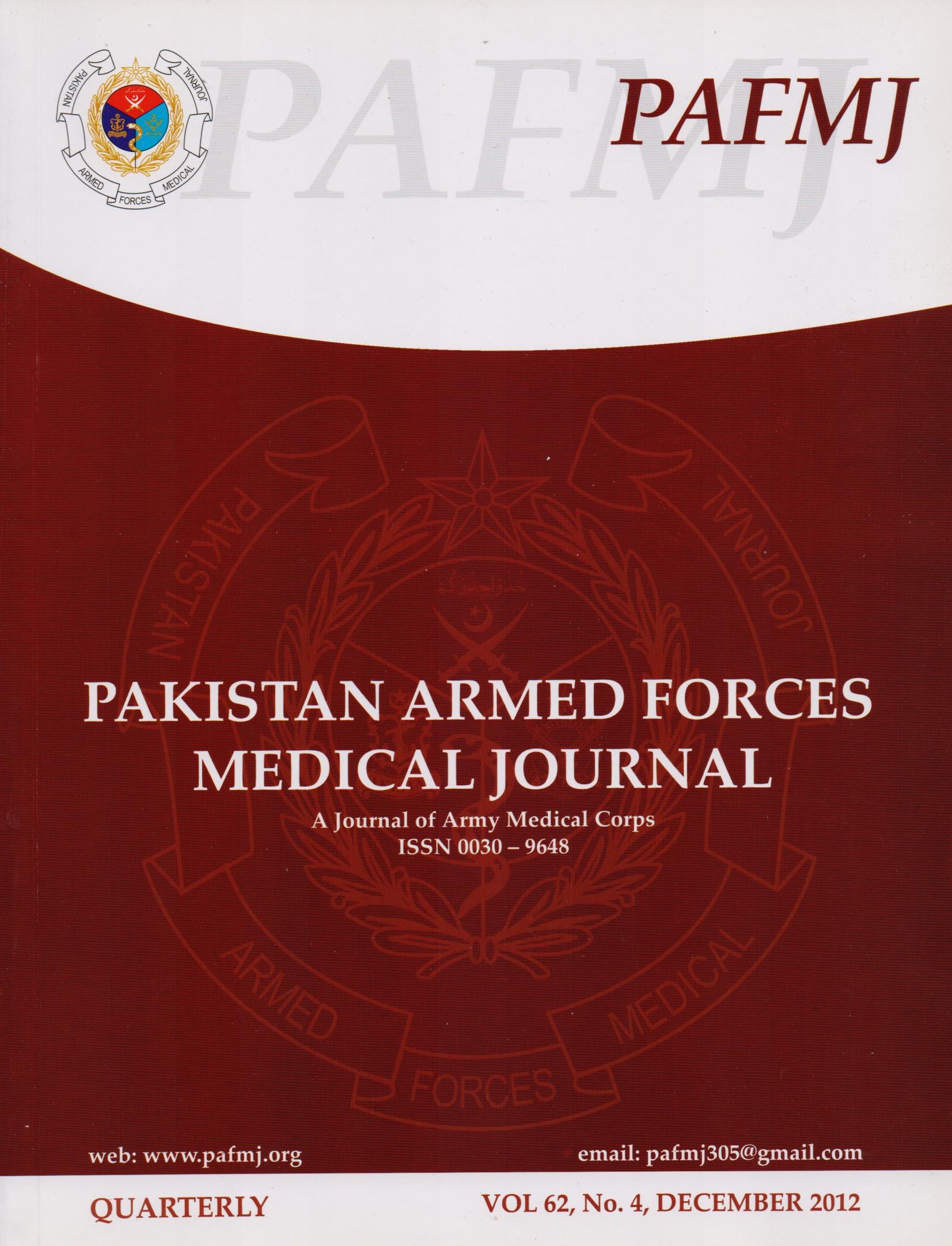EFFECT OF VISFATIN ON LIPID PROFILE OF OBESE AND DIABETIC MICE
Effect of Visfatin Obese and Diabetic Mice
Keywords:
Adipocytokines, Obesity,, VisfatinAbstract
Objective: To determine the effect of visfatin on blood lipid levels in balb/c strain of albino mice.
Design: Quasi experimental study.
Place and duration of study: The study was carried out at the department of Physiology, Army Medical College, Rawalpindi and National Institute of Health Sciences, Islamabad from April to December 2007.
Material and Methods: One hundred and twenty balb/c strain albino mice were procured from NIH, Islamabad. After taking base line blood samples, mice were divided randomly into four groups. Animals in groups I and II were made obese by feeding high fat / high carbohydrate diet whereas mice in Groups III and IV were induced diabetes mellitus by injecting streptozotocin. Groups I (obese) and III (diabetic) served as controls whereas groups II (obese treated) and IV (diabetic treated) were administered visfatin injection. Terminal intracardiac blood sample was used to measure the serum lipid and visfatin levels.
Results: Serum lipid levels were found increased in obese and diabetic groups as compared to healthy mice. The administration of recombinant-histidine soluble (mice) visfatin significantly (p< 0.01) decreased the serum lipid levels with concomitant increase in HDL levels (p< 0.01) in obese and diabetic groups of mice and were comparable with baseline normal values of healthy controls.
Conclusion: Visfatin is a potential antilipidemic adipocytokine that probably modulates insulin sensitivity and decreases atherogenic lipids (triglycerides, cholesterol, LDL and VLDL) with concomitant increase in HDL in obesity and diabetes mellitus.











